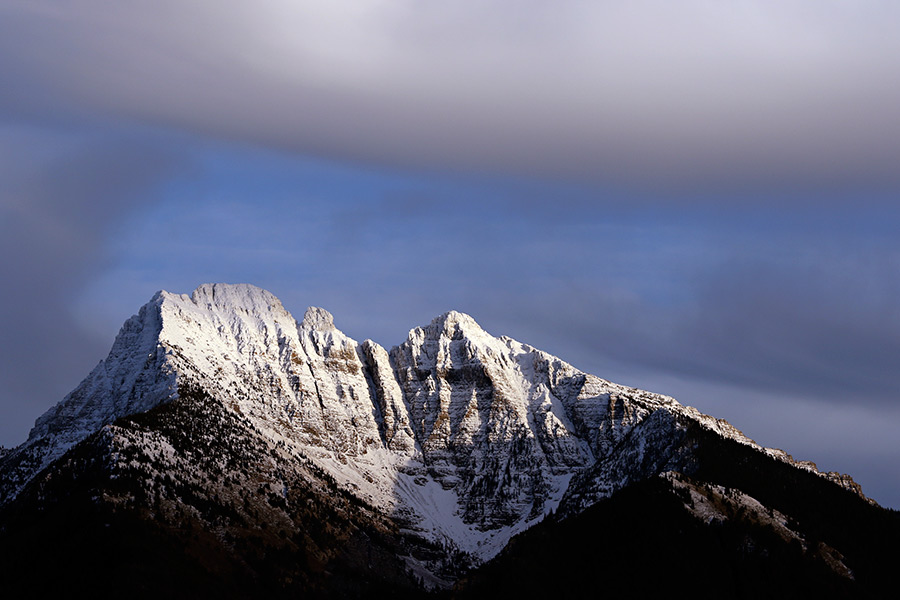It’s happening: Snow closed Going-to-the-Sun Road on Sept. 12 and then again on Oct. 8, and finally shut down the road for the season by Oct. 11. On Oct. 10, the Flathead Valley floor started getting snow from a consistent, cold storm system that had stuck around for days.
Just a couple weeks after the first official day of autumn, western Montana is getting an early dose of winter, a cold front that weather and climate scientists say could represent a look at the upcoming chilly season.
Earlier on in 2016, the National Oceanic and Atmospheric Administration (NOAA) predicted a 75 percent chance of a strong La Niña season for winter 2016–2017.
La Niña is the colder sister climate phenomenon to the warmer El Niño. During a La Niña year, the ocean surface cools, and sea surface temperatures fall below average in the central and eastern tropical Pacific Ocean. Normal easterly winds along the equator become stronger than usual.
But as the year went on, those predictions weakened. As of the end of August, climatologists dropped the chances of a strong La Niña winter to 40 percent as sea surface temperatures continued to cool but not as quickly as forecasters thought. The forecast now is a continuation of neutral conditions mixed with a bit of La Niña.
What does this mean for Northwest Montana?
According to Bob Nester, senior meteorologist for the National Weather Service in Missoula, the La Niña advisory may be canceled for now, but western Montana looks like it’s headed for a winter of average or above-average snowfall, mixed with average temperatures sometimes dipping into below-average territory.
“The pattern they’re showing right now looks like a pattern that is favorable for precipitation,” Nester said last week. “That generally means we get a better westerly flow; that’s good for snow in the mountains.”
Nester also said the slowed La Niña may still have effects on storm and wind directions, with predicted storms flowing in a northwesterly direction, meaning more snowfall for the valleys.
“We’ll have some cold days, we’ll have a couple of big snowy days, and it looks like the frequency of weather systems that move in will be more,” Nester said.
There is potential for arctic systems to move down from Canada and freeze the valley, Nester said. This would be true even in a warmer El Niño year, he added.
But the colder sister season will have an effect on the winter Flathead Valley residents see from the ground. While last year was OK for snowpack, the warmth of El Niño precluded the mountains from having as much snow as possible.
This year, Nester said he anticipates snow levels to fall along the normal or above-normal end of the scale, with better potential for snow in the valleys.
Last winter, Kalispell received 41.4 inches of snowfall. The normal amount, according to NWS, is 55.8 inches. So if this is an “average” or “normal” year, residents could expect over a foot more of snow than last season, he said.
“I anticipate that number to be more near normal this year, given the fact that they’re calling for above-normal precipitation and near-normal temps,” Nester said. “That’s going to be the big difference overall. Last season was warmer than normal everywhere, and we’re not expecting that this year.”
For the skiers and snowboarders hungrily anticipating the winter season, it looks like they’ll be pleased. Ski and snow condition-tracking website On The Snow has been monitoring the downgraded La Niña all year, and the September update is good news for the area’s ski hills.
According to the site, the “biggest winners” for above-normal snowfall this year includes much of the Northwest, including Whitefish. Mount Hood, Mount Baker, Whistler, Lake Louise, Big Sky, and Whitefish Mountain Resort are among the areas listed for snowfall 120 percent of normal, the site predicted. Whitefish Mountain Resort’s average seasonal snowfall is 300 inches.
